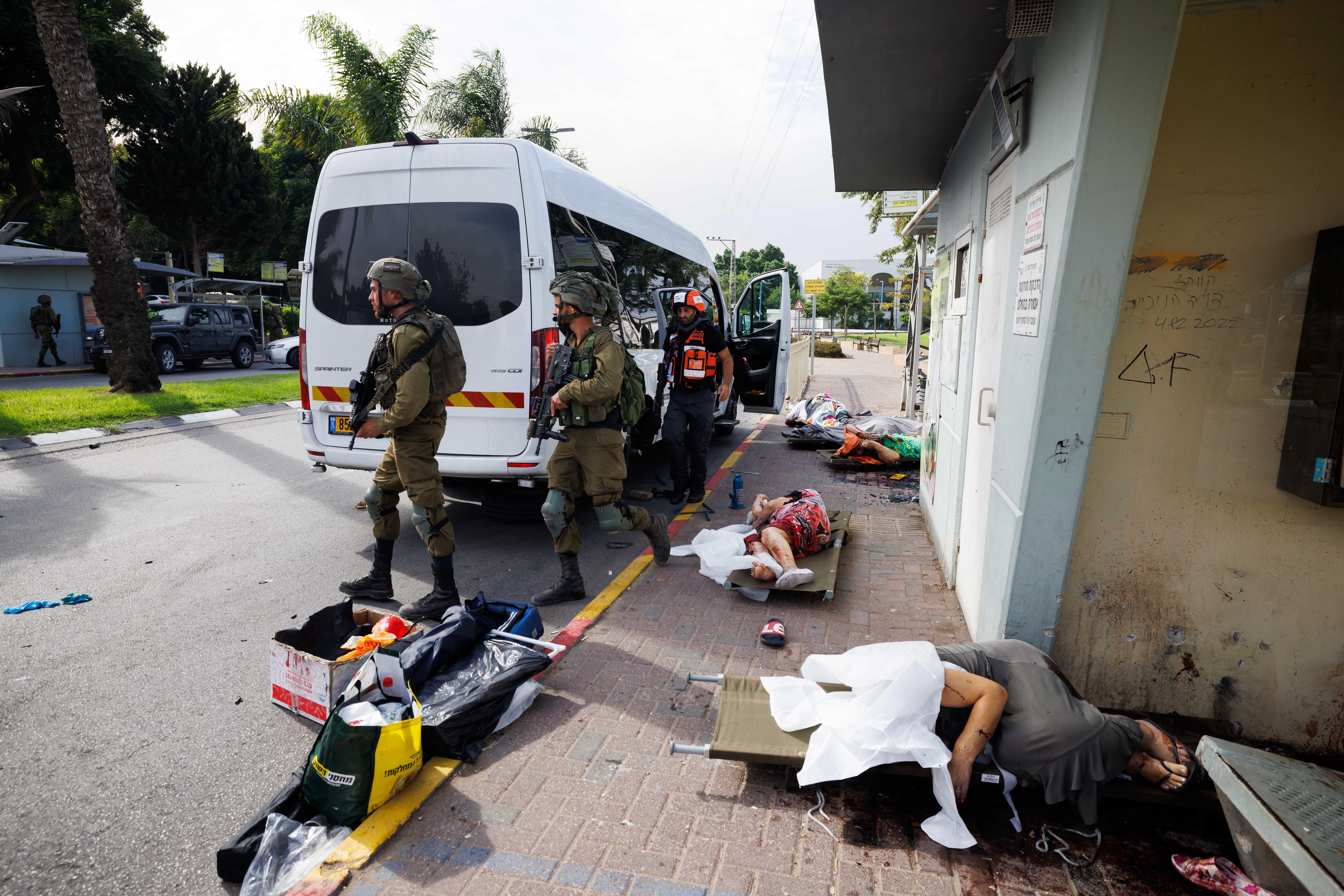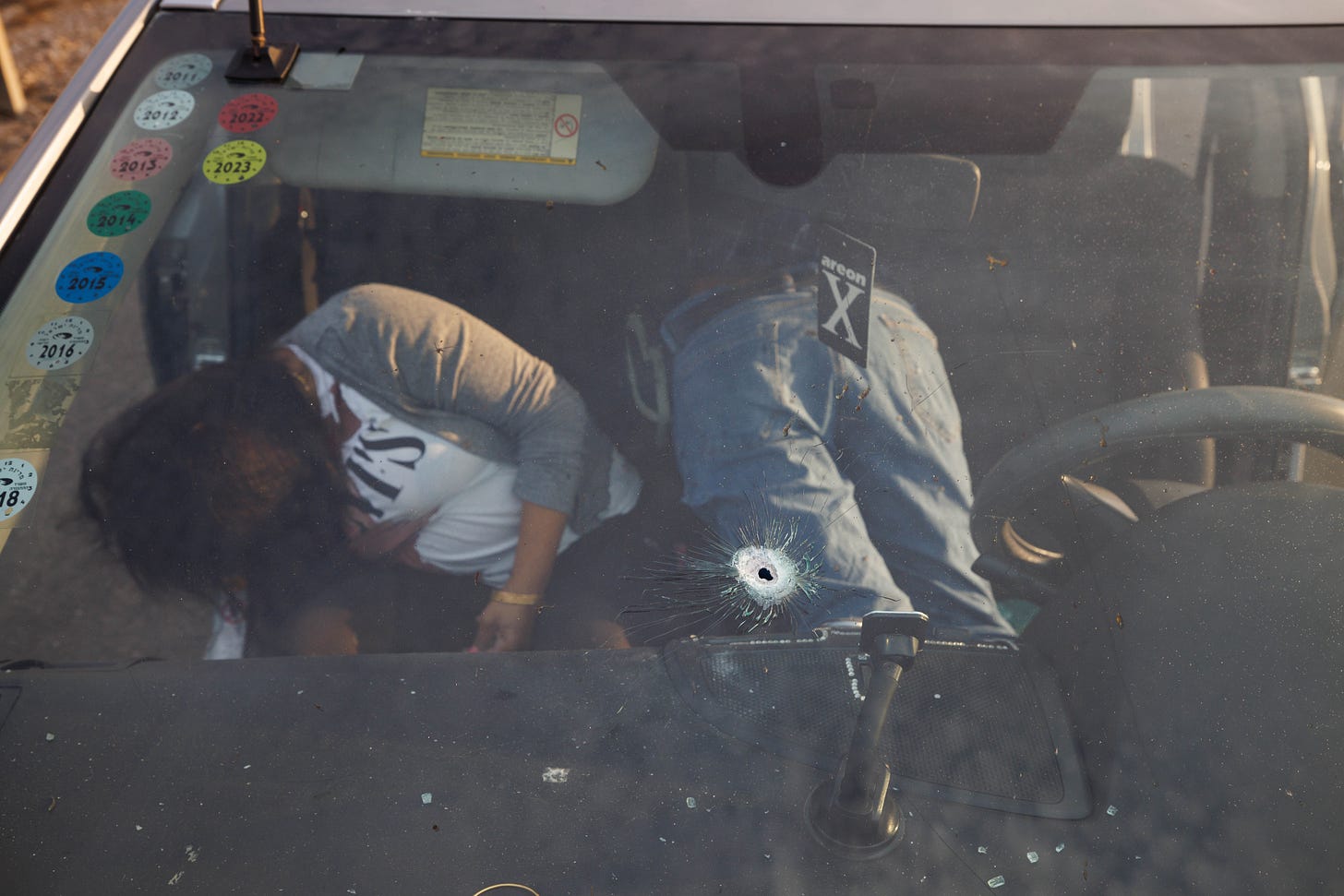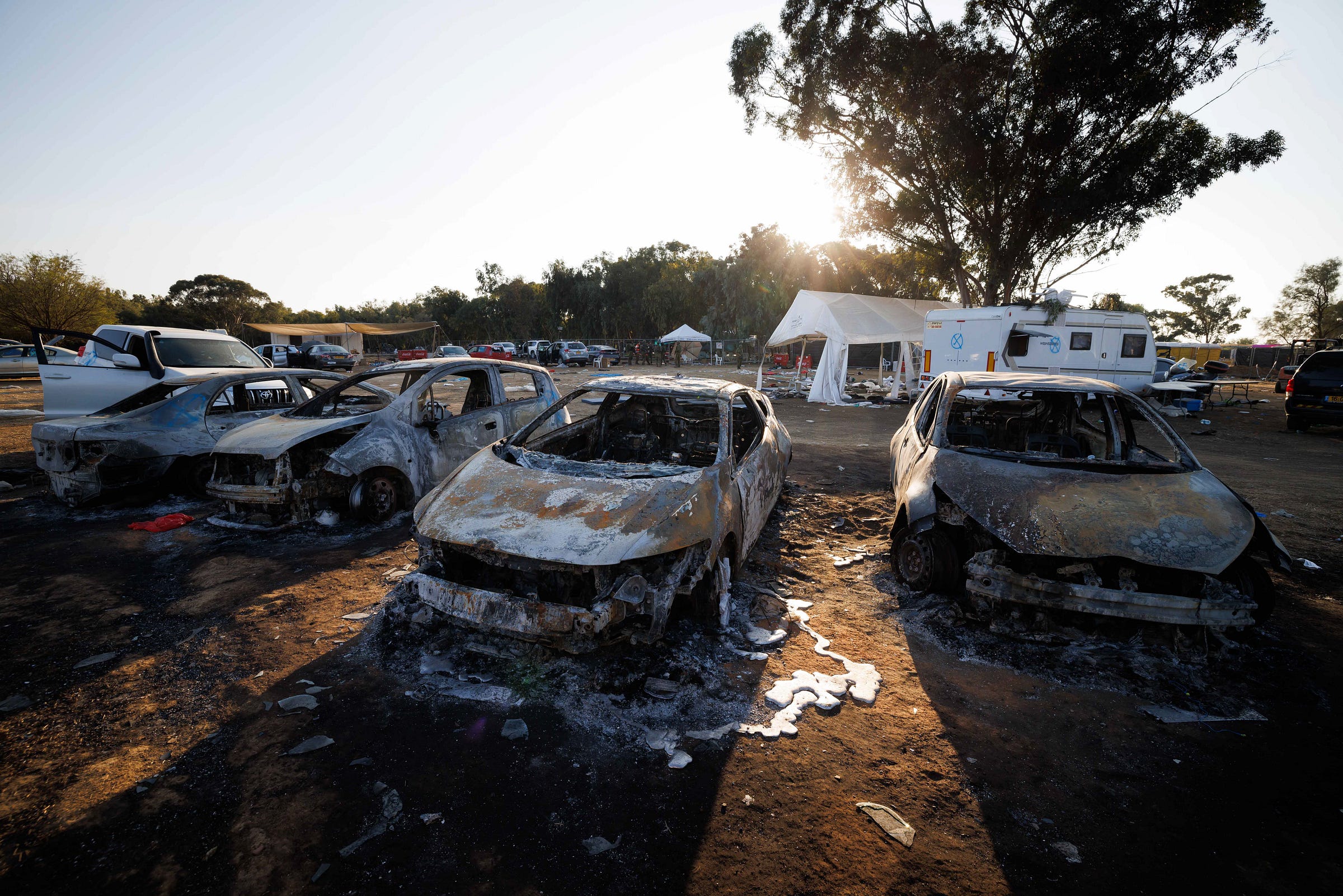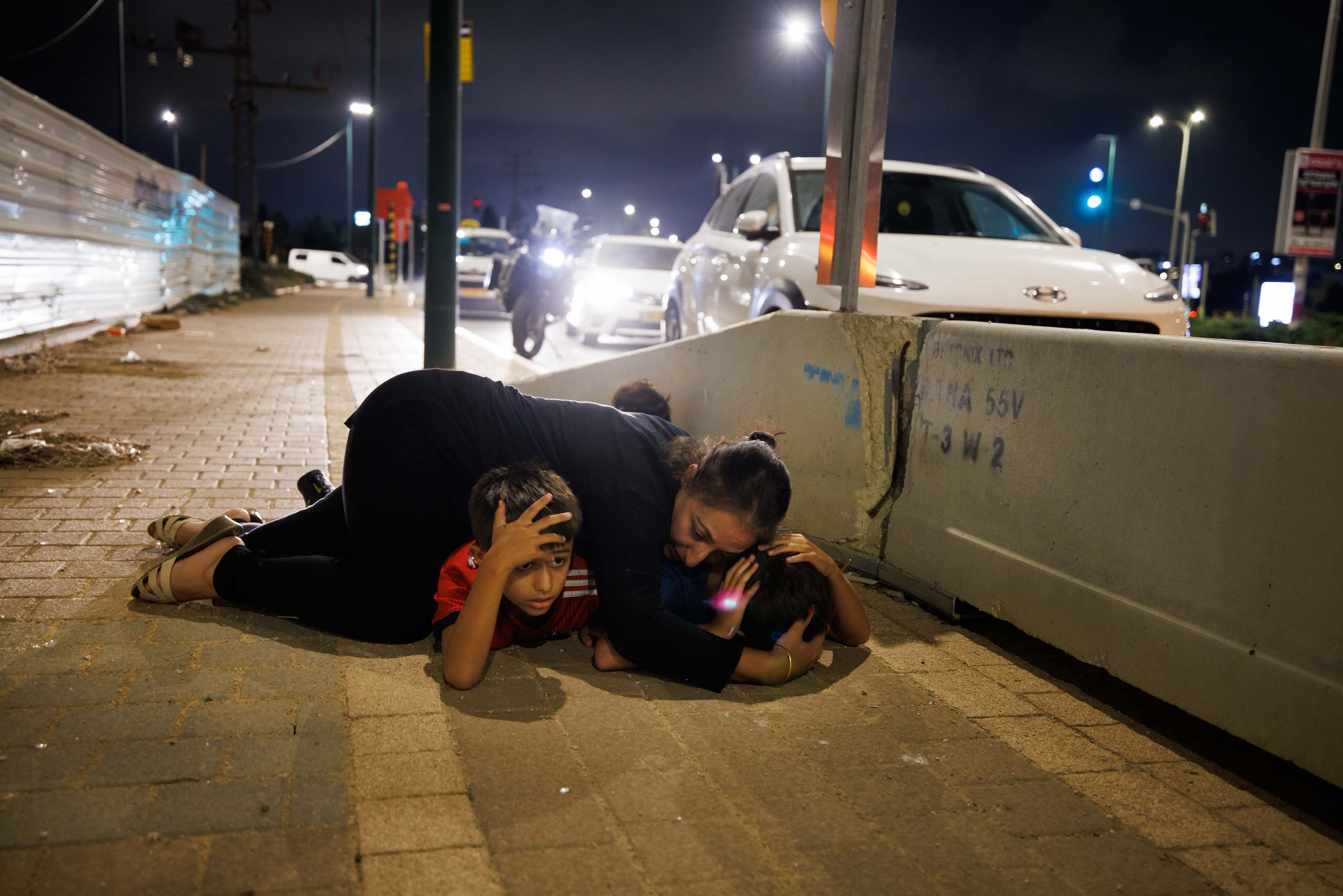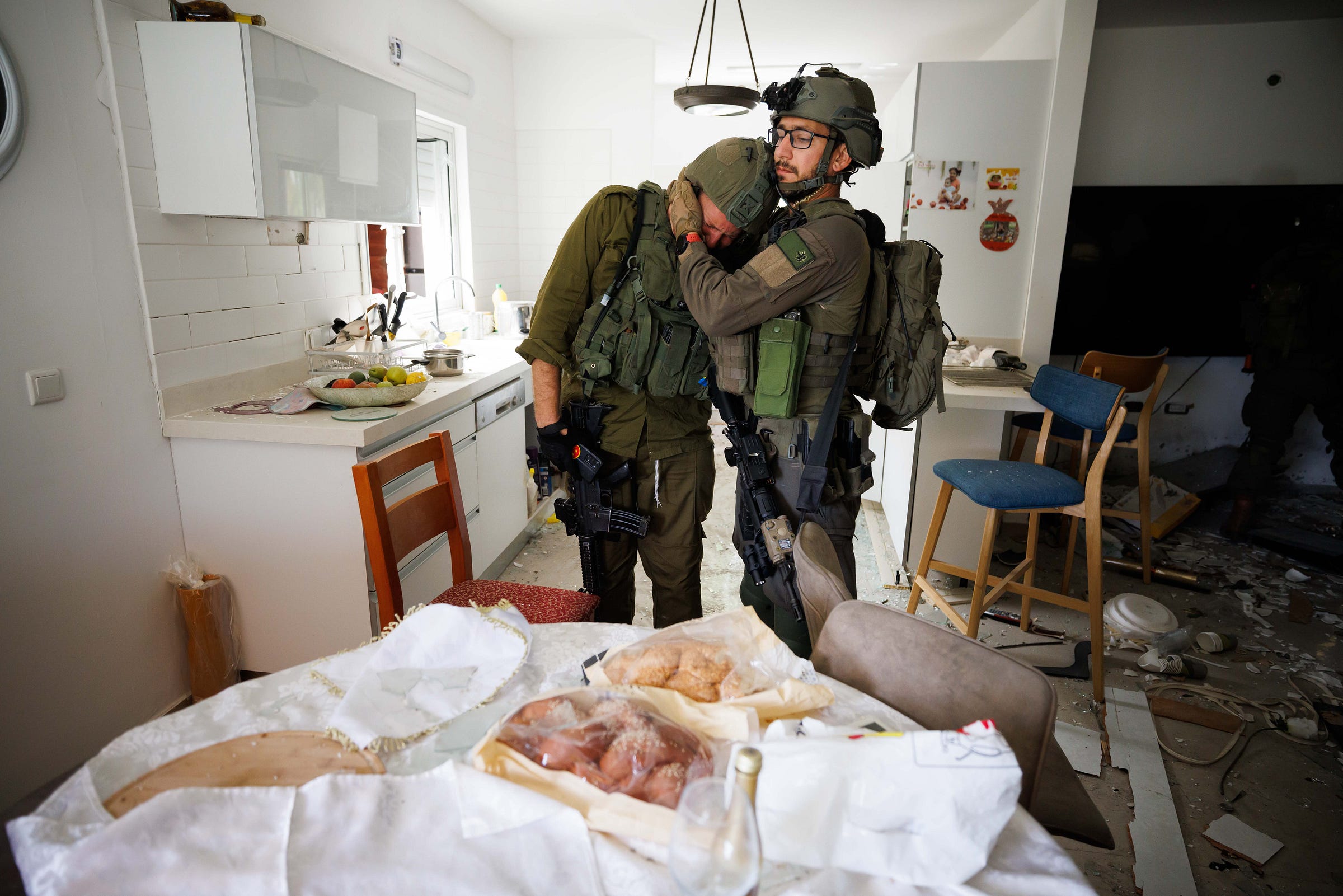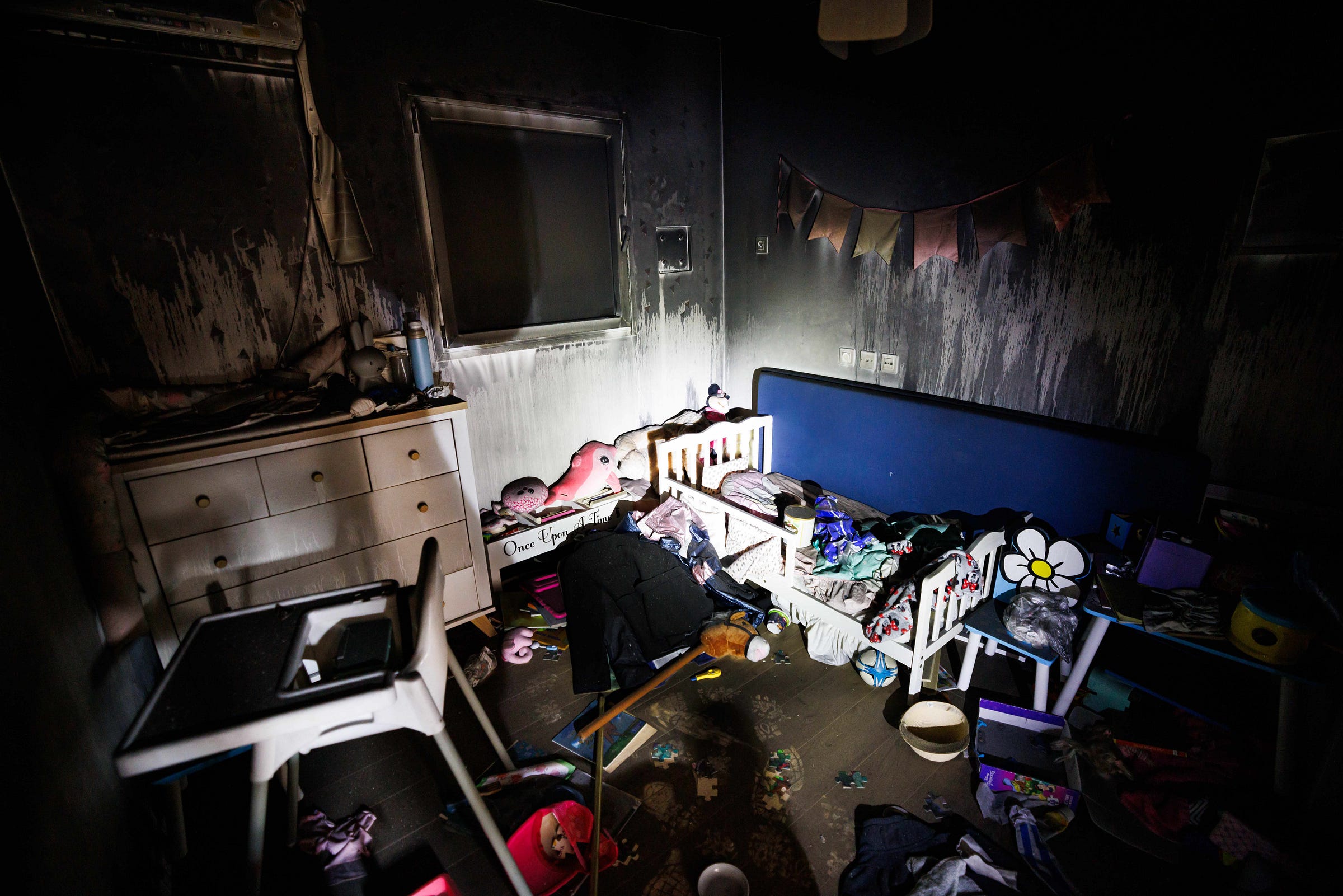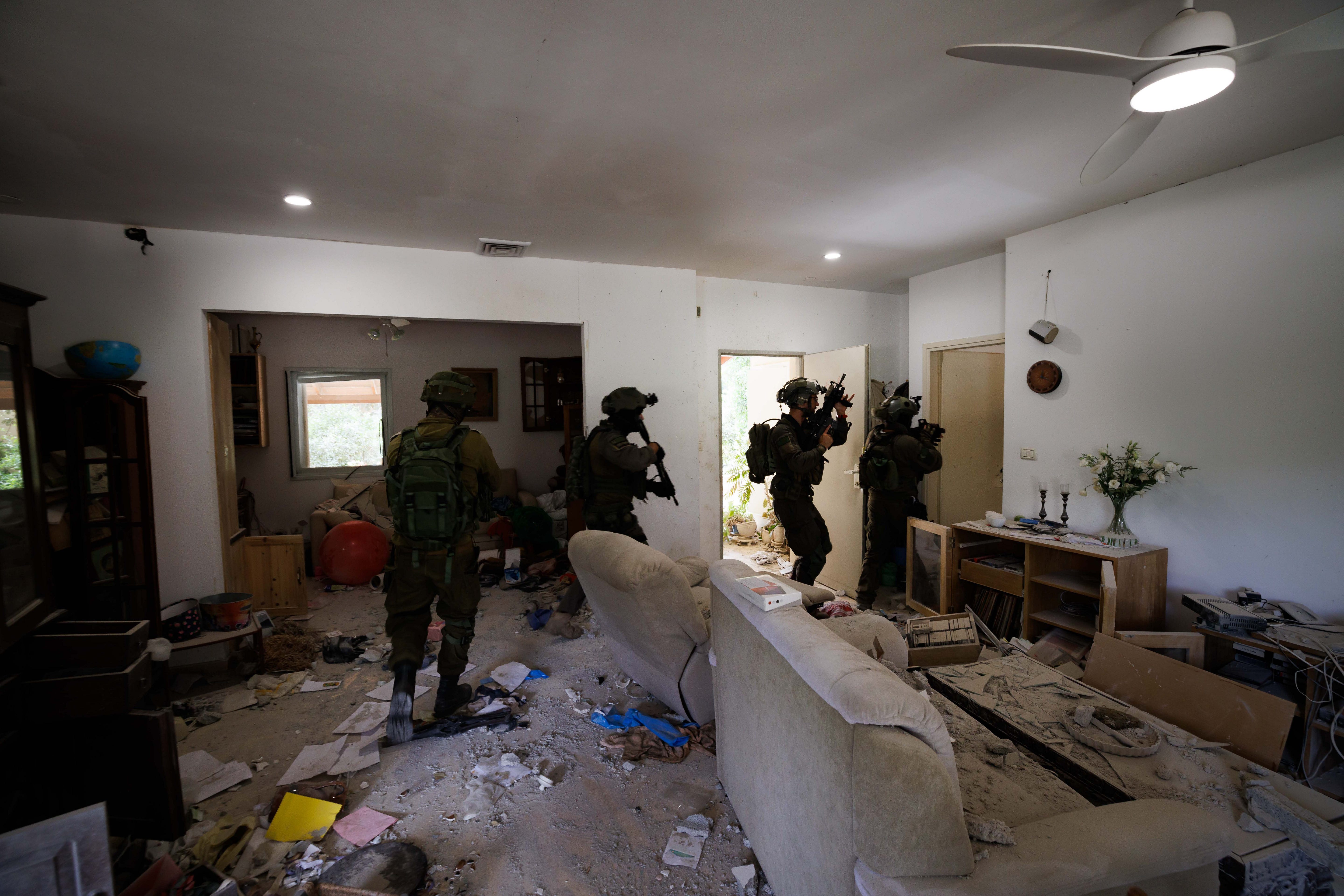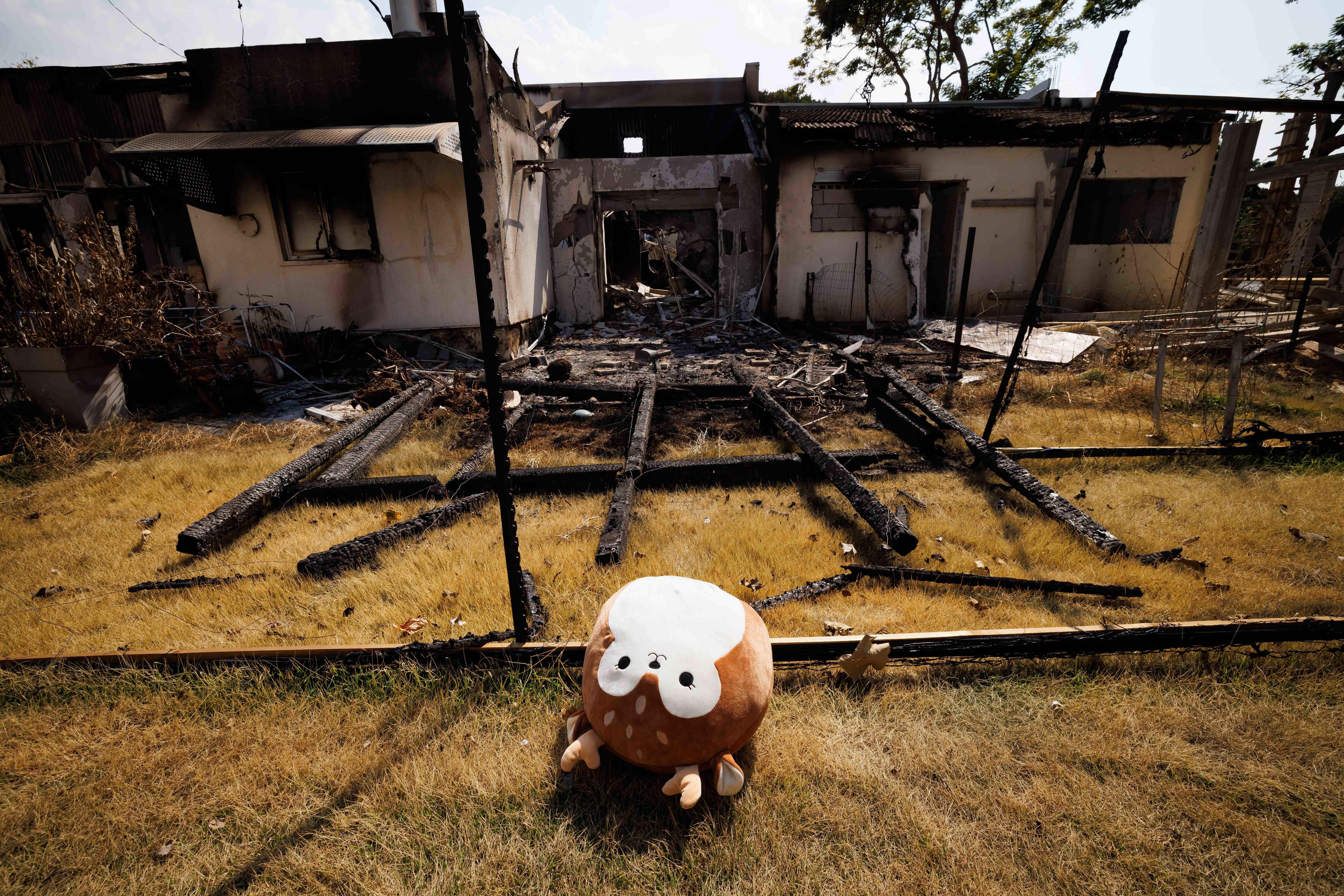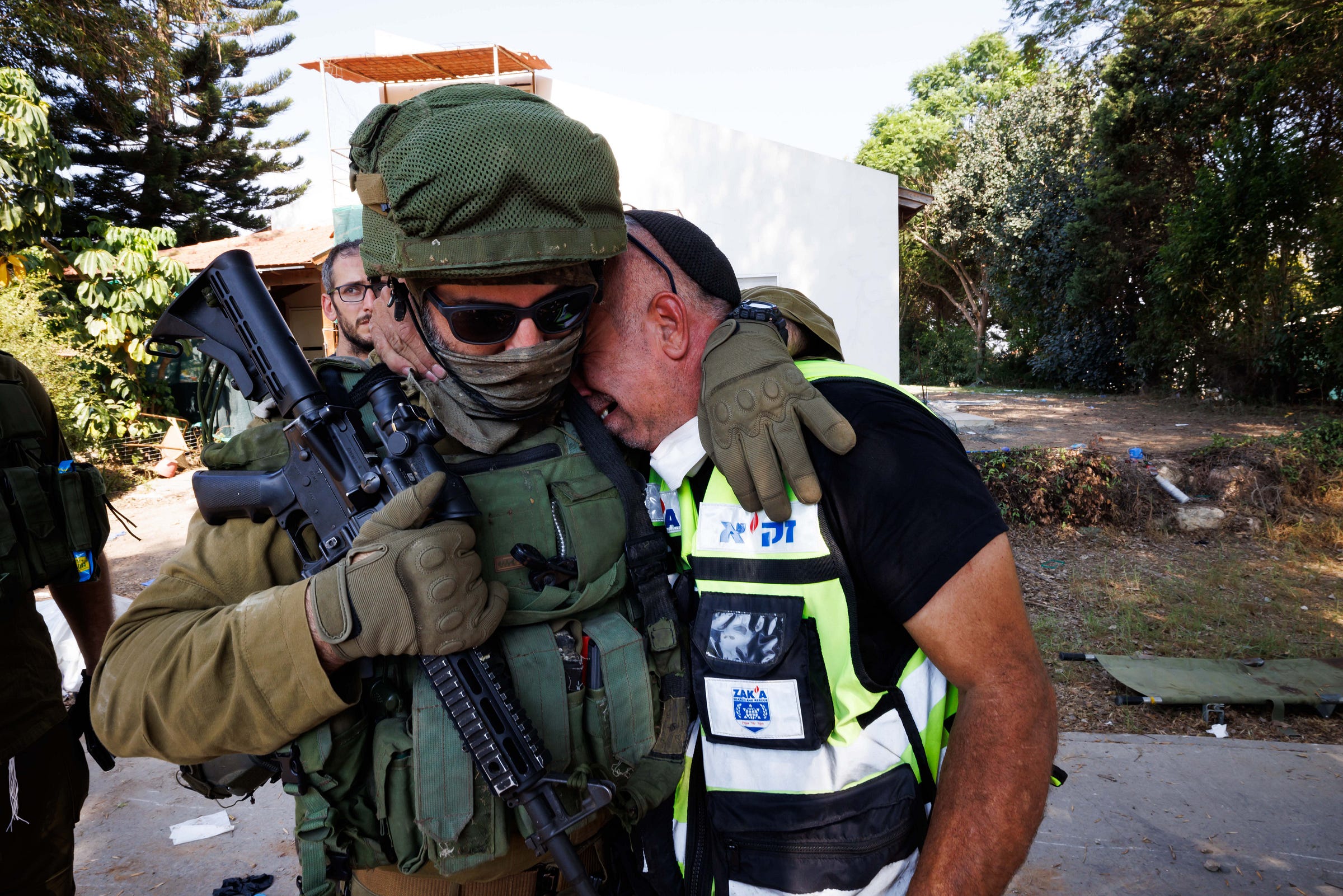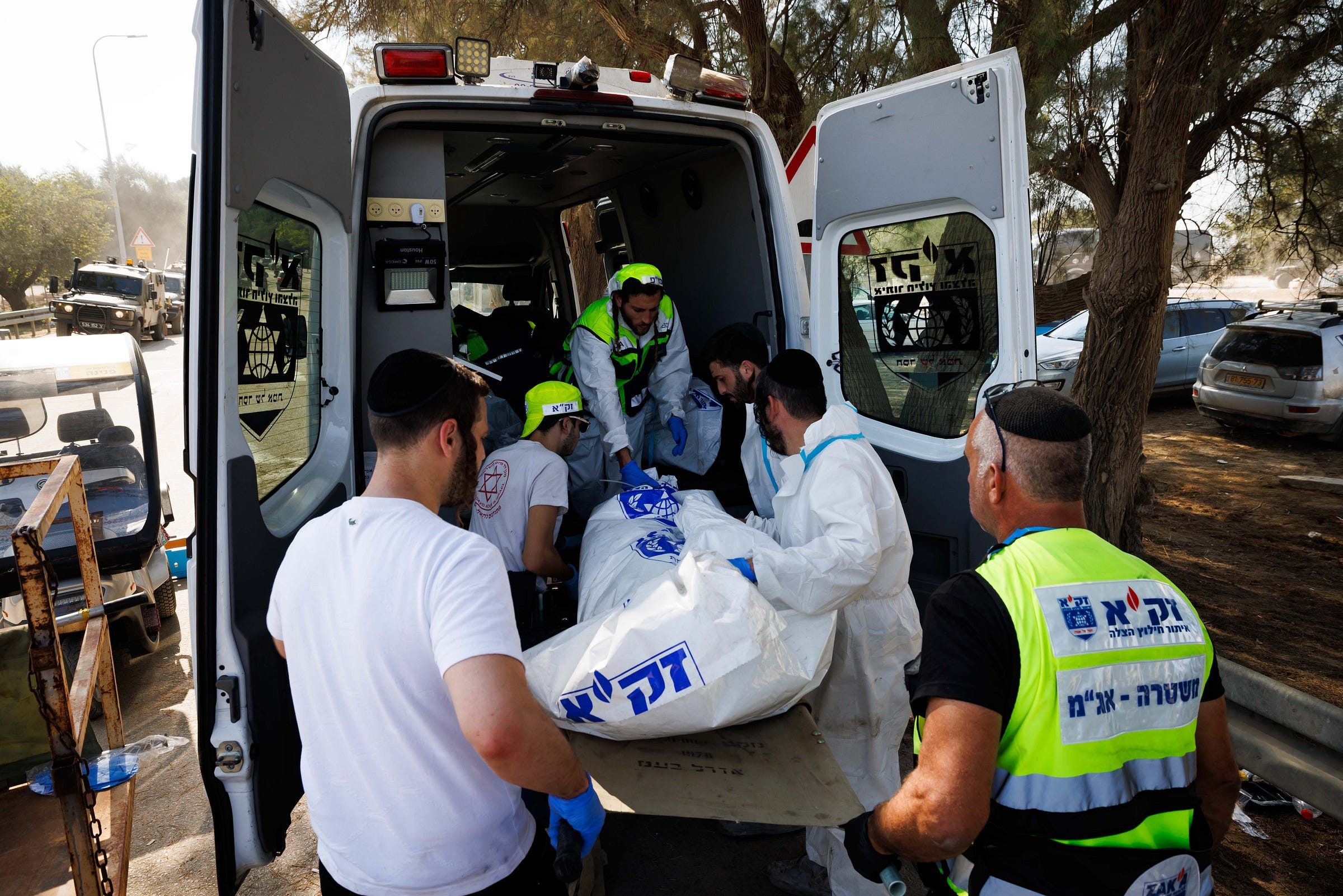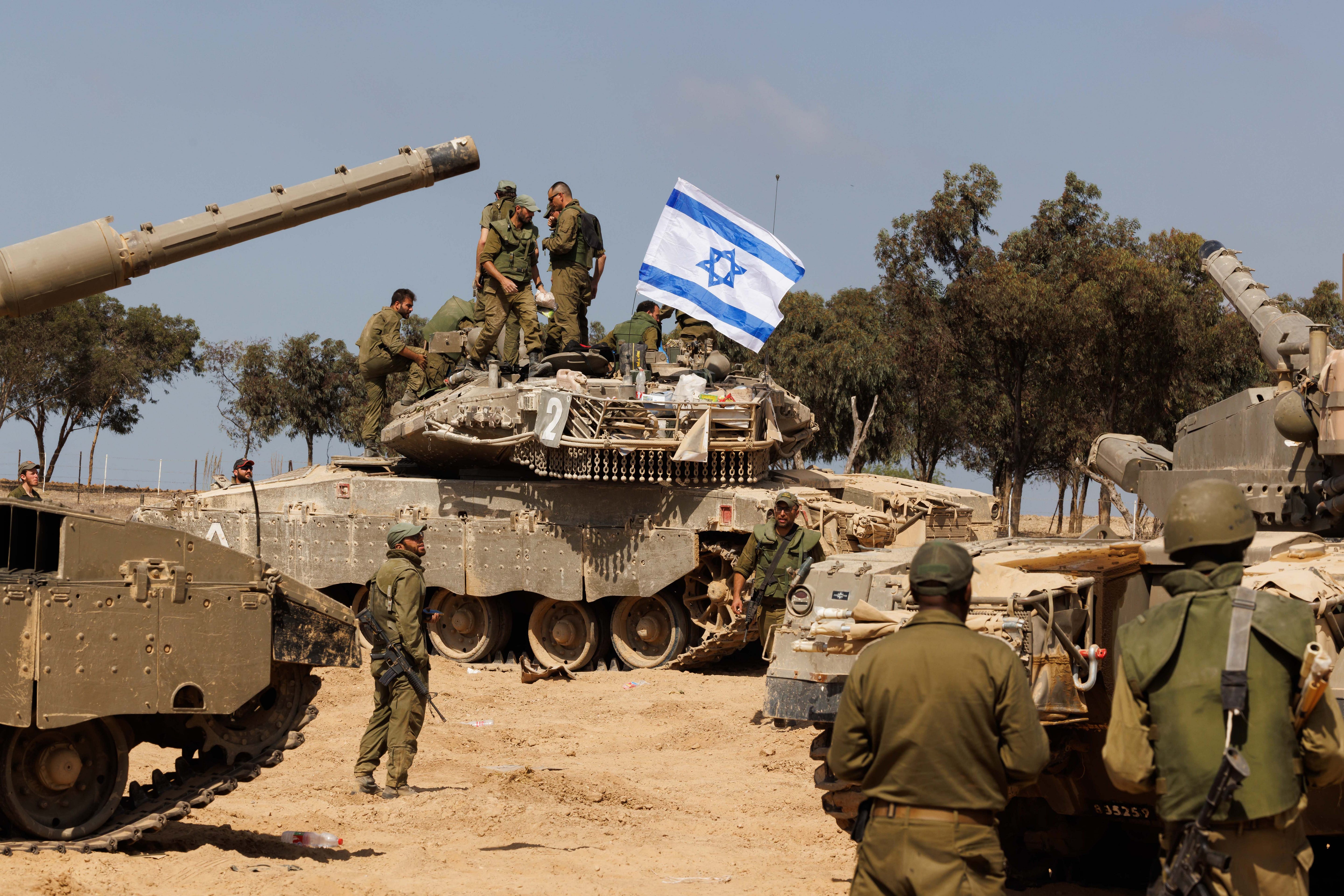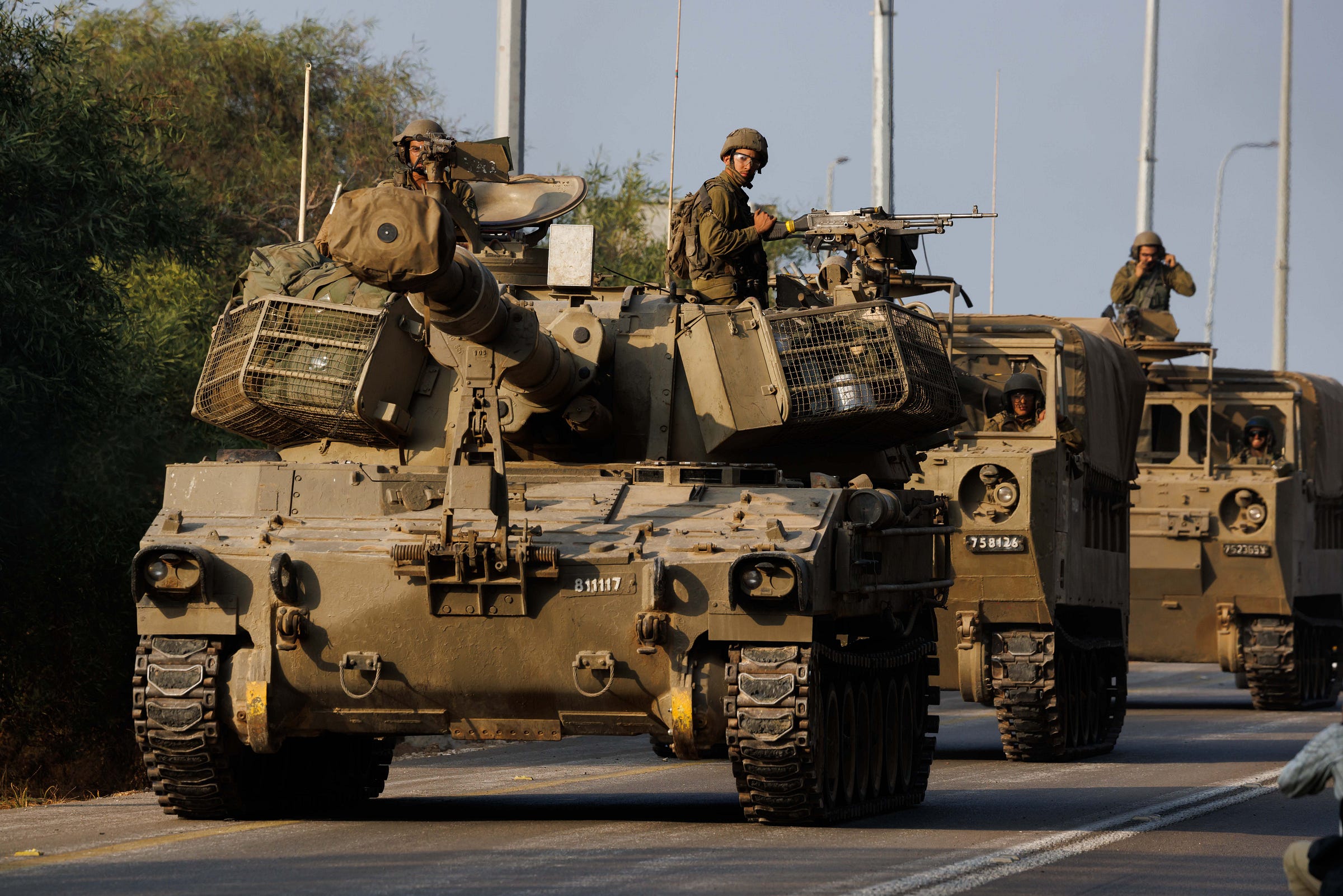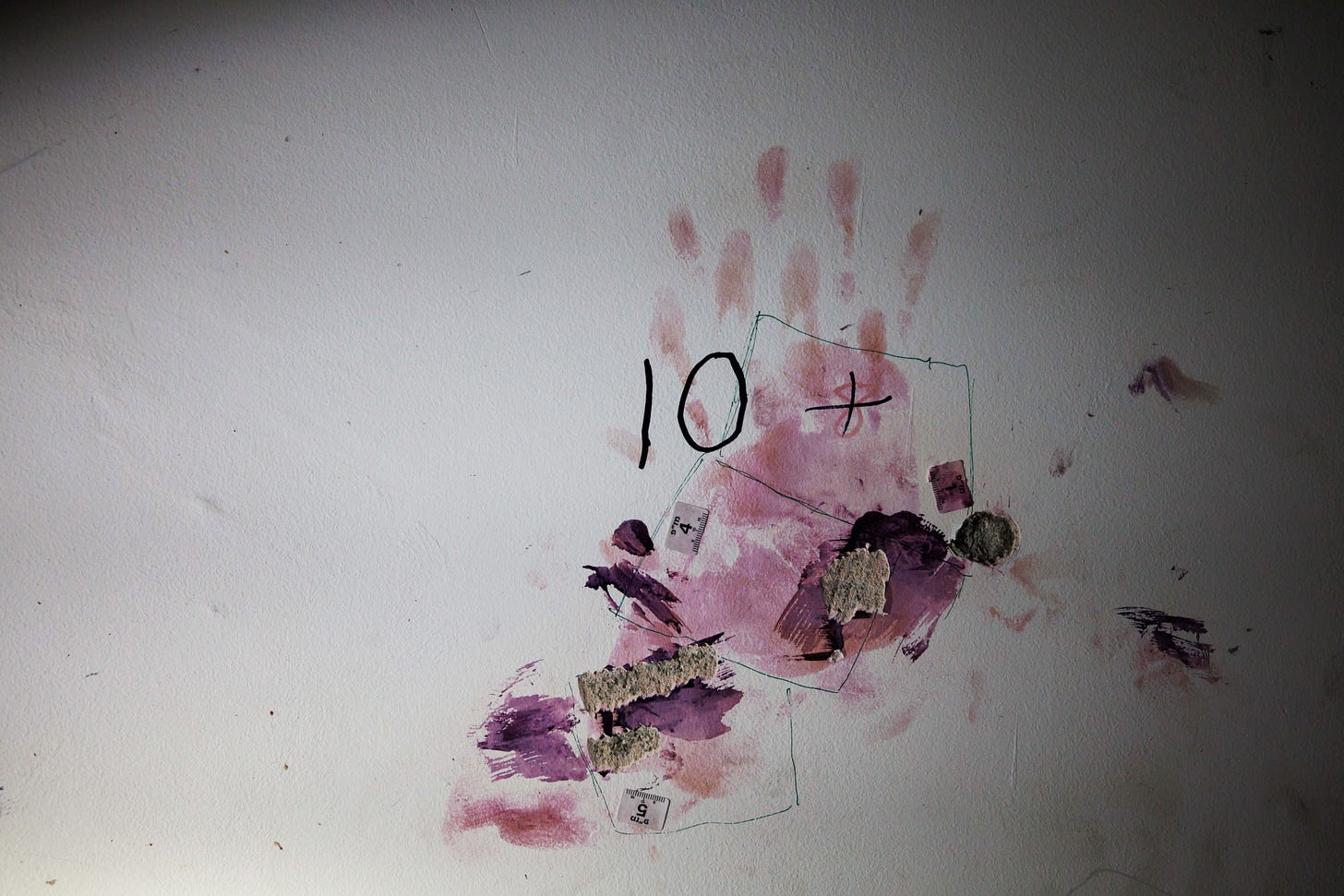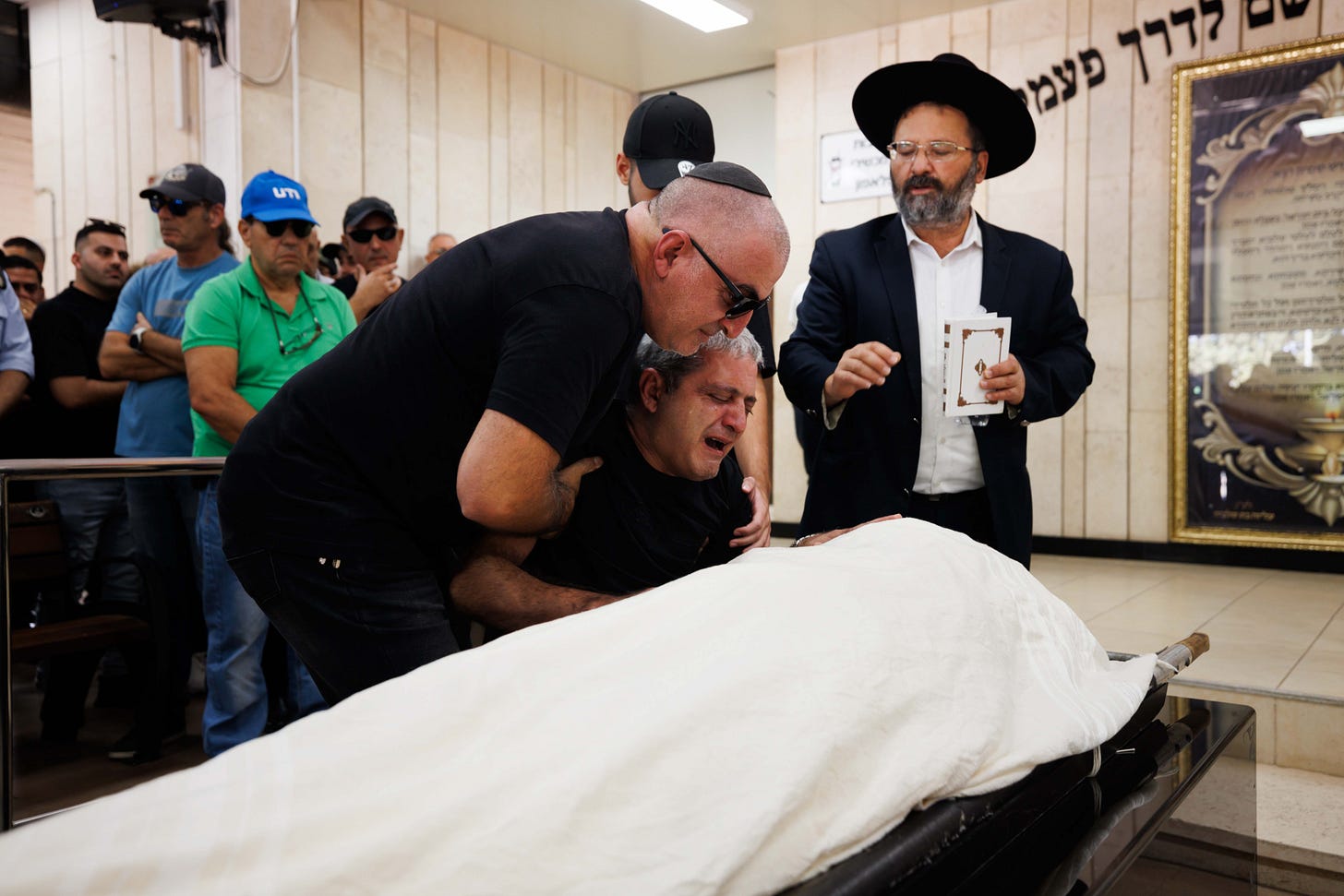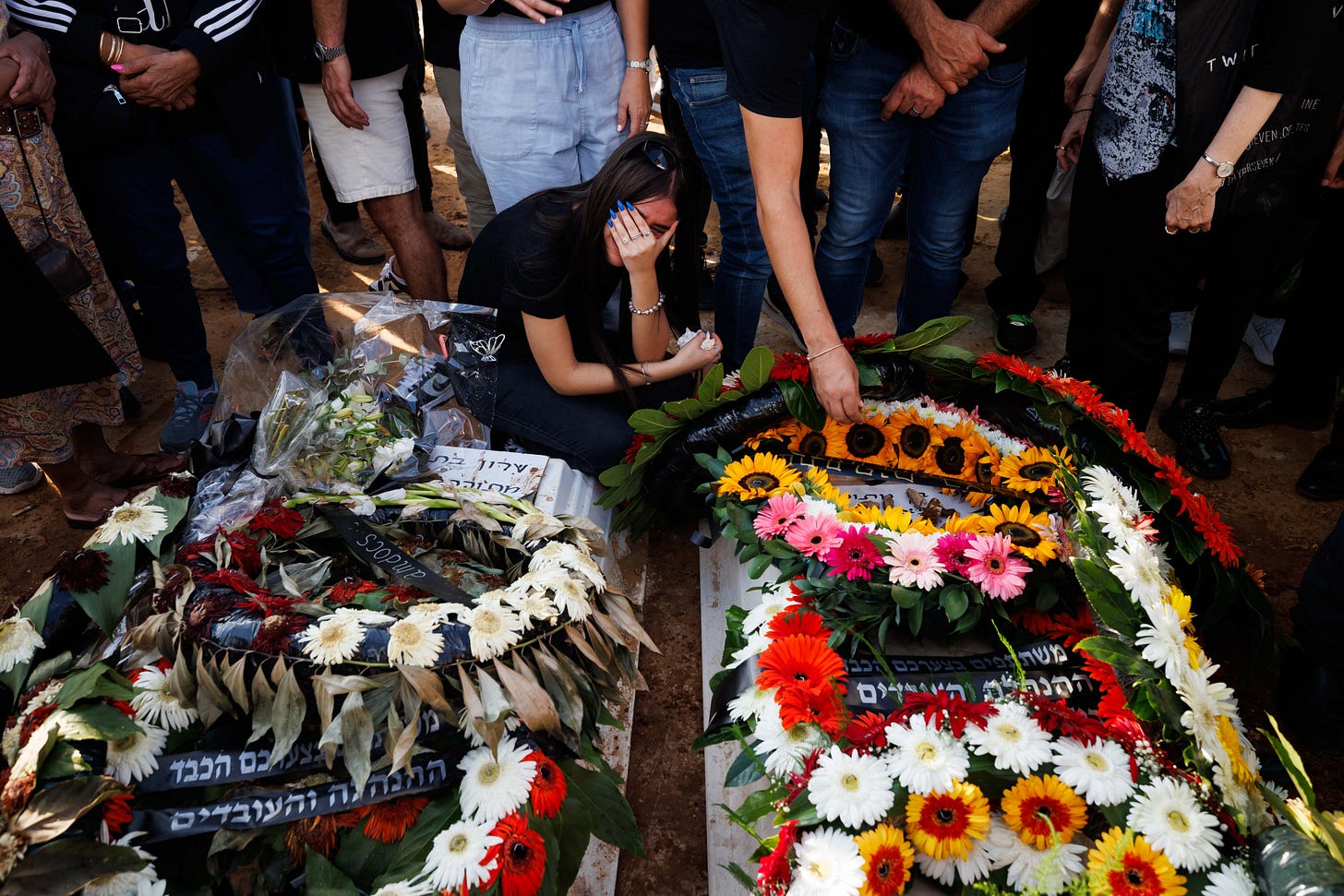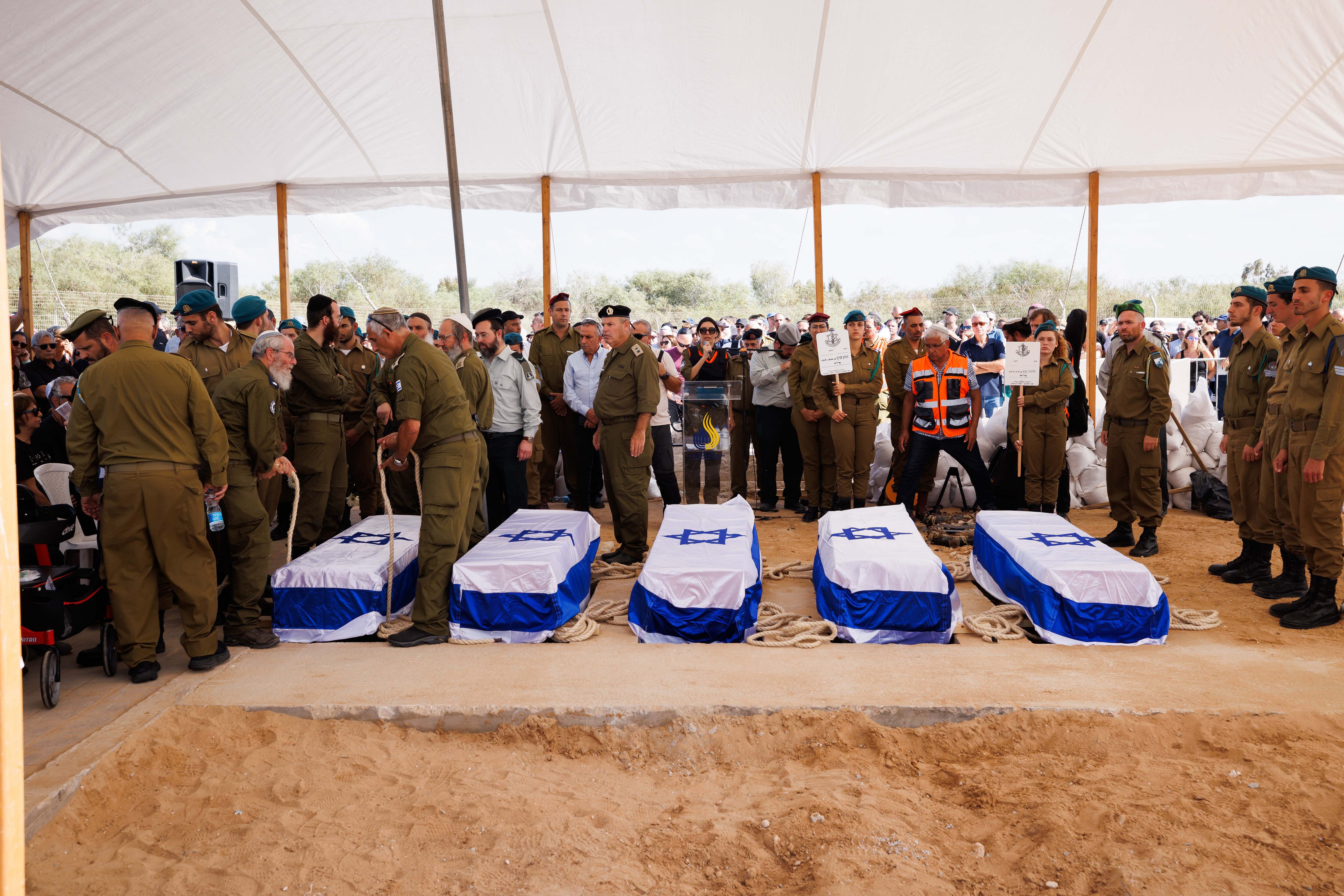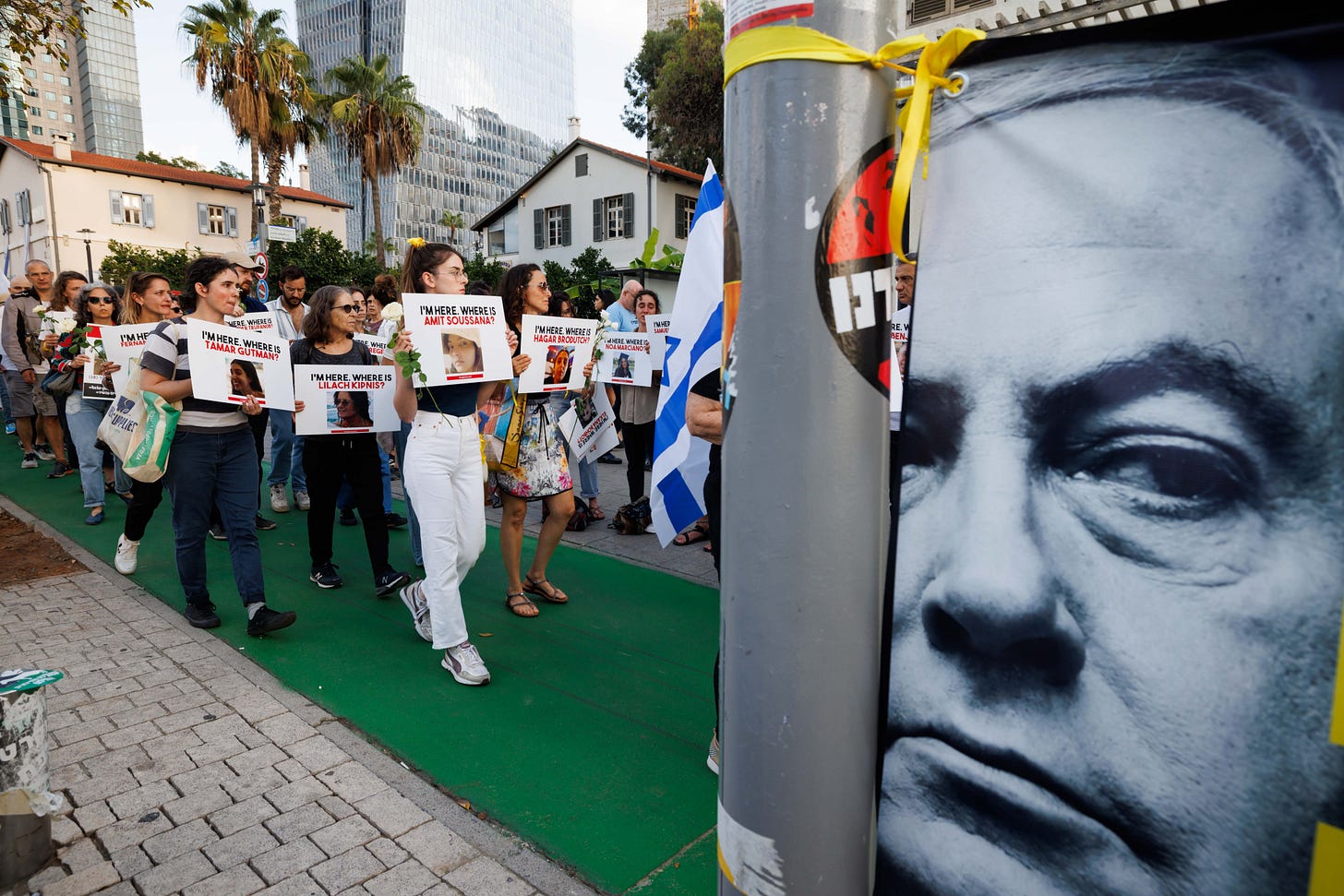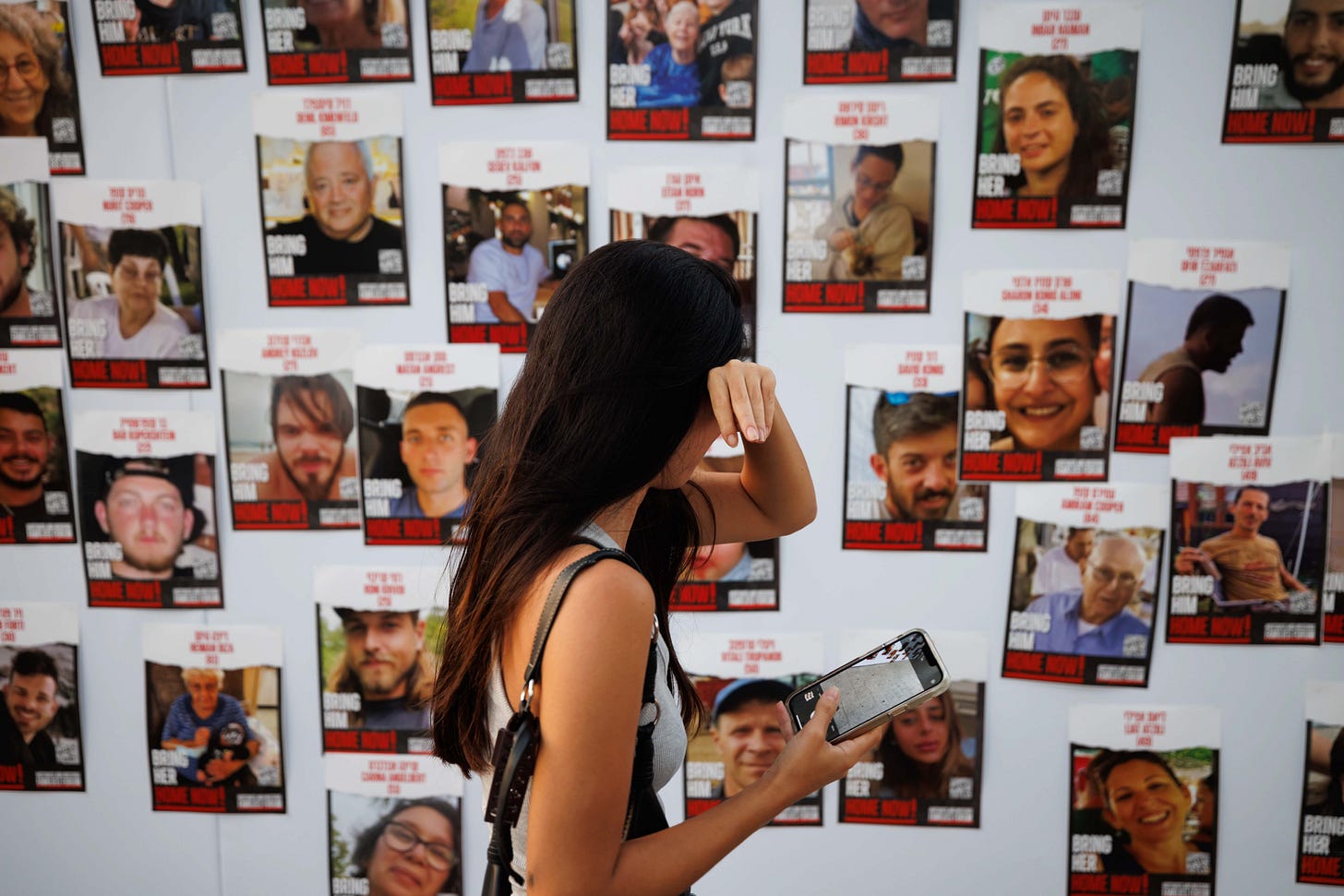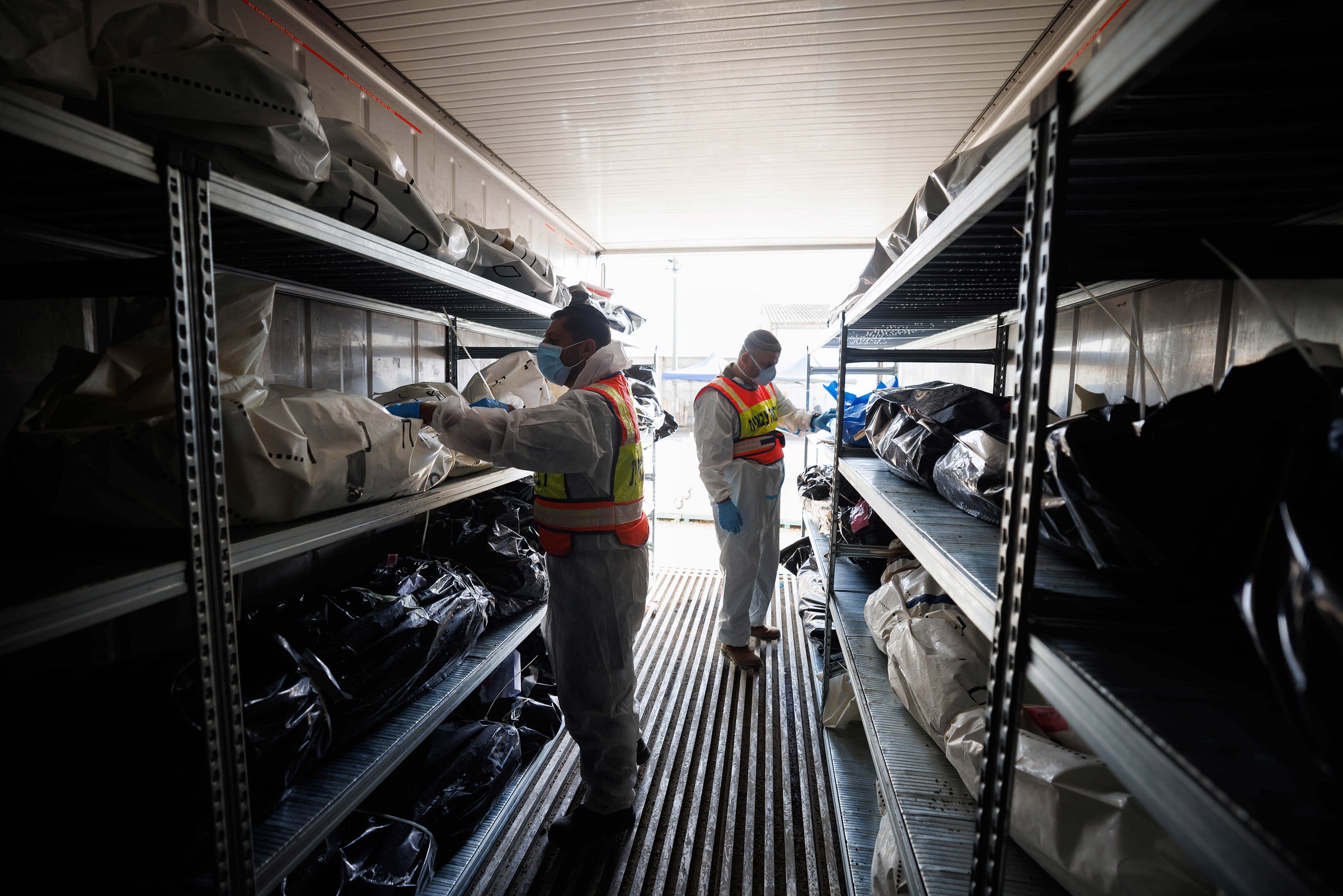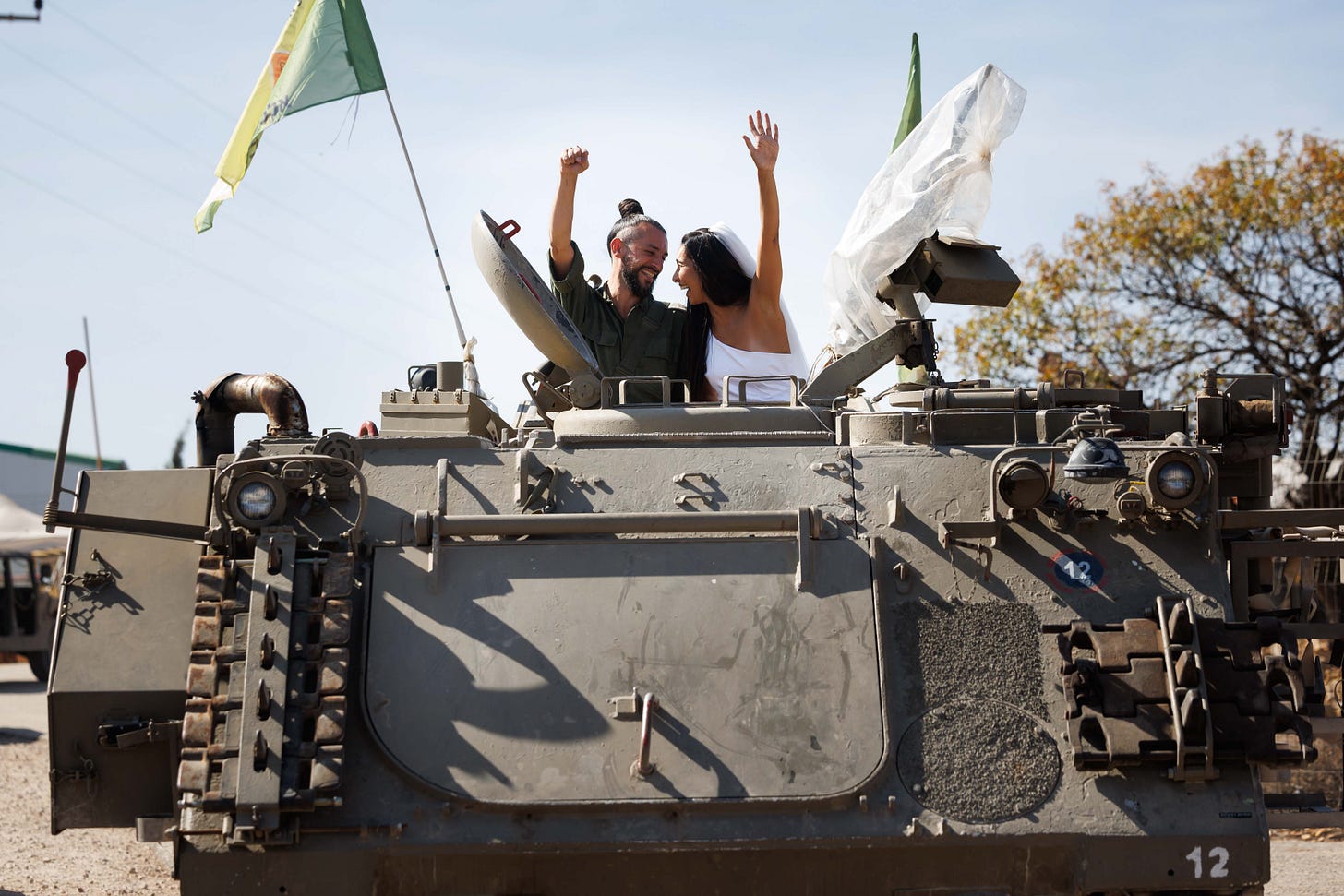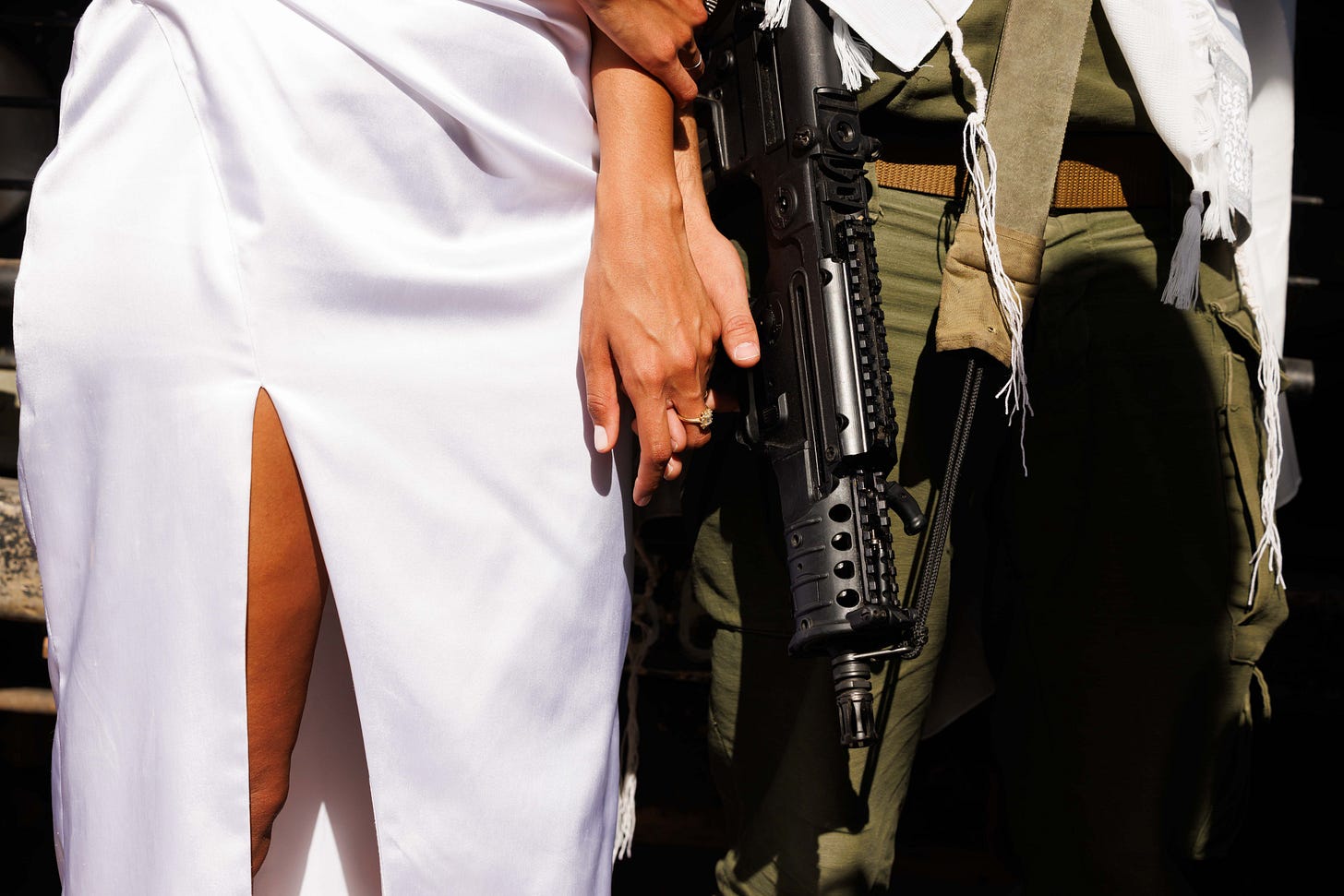Israel. October, 2023. A Photo Essay.
Ziv Koren: Eye on Israel from October 7
In this special issue of State of Tel Aviv we present a remarkable photo essay by top Israeli (and international) photojournalist, Ziv Koren.
On Saturday, October 7, as news broke of the Hamas attack, Koren did what he does; grabbed his gear and jumped on his motorcycle. He raced to the area of the attacks in southern Israel - which is just an hour or so from Tel Aviv - particularly on a Saturday morning when roads are empty.
Much of the area remained a closed military zone with active, ongoing battles. Israel did not control its border with the Gaza Strip until late on Monday, October 9. Even then, active Hamas terrorists were still active within the country.
Koren has shared with State of Tel Aviv some of his remarkable images from those first hours and the days and the weeks following.
Images: Ziv Koren
Text: Vivian Bercovici
Sderot. Saturday, October 7.
A city of 25,000 approximately one kilometer from the border, Sderot has been pounded by Hamas rockets more than any other town in Israel since 2006, when Hamas was elected to govern the Gaza Strip.
In the first photograph are seniors who were embarking on a day trip to the Dead Sea when their minibus was ambushed. They were all murdered.
The second photograph shows a couple murdered in their car.
Hamas terrorists ravaged the town, which has since been evacuated. They ambushed the police station, which was retaken by Israeli special forces following a long, ferocious battle. More than twenty Sderot police officers were murdered. Apparently, a large group had gathered on a break. They had no weapons accessible.
Ashkelon. Monday, October 9.
Just north of the Gaza Strip, the beautiful beach town of Ashkelon is home to approximately 160,000, the third-largest city in Israel's Southern District and another frequent Hamas target. Below, rubble and religion.
Gaza Border. Monday, October 9.
IDF preparing for the Gaza offensive.
Unspecified location. Tuesday, October 10.
This is likely in the vicinity of the Nova music and dance festival which was held overnight near Kibbutz Re’im, also close to the border. At approximately 6:30 am on October 7, armed paragliders swooped down on the thousands of young revelers. A barrage of rockets soon followed. As they tried to flee they were trapped by terrorists who closed off all escape routes, having arrived on motorcycles and trucks. In the flat, desert expanse there was nowhere to hide. These young adults, mostly aged 20-40, were mowed down by submachine gun fire. More than 270 were murdered on site. And, even then, the Hamas terrorists searched bushes, car trunks, leaving no stone unturned. Women were gang raped next to their murdered friends. Boyfriends were forced to watch the vicious assaults. Dozens of festival attendees are believed to have been taken hostage to the Gaza Strip. The fate of many is still unknown. This is the largest single mass casualty terrorist event ever in Israel.
Ness Tziona. Wednesday, October 11.
When the red alert sirens wail and warn of incoming rockets, civilians have from seconds to one minute to find safe shelter. This means that walking a block requires a strategy. This woman and child were either out walking or driving. In that case you hit the ground and cover your head if possible. And pray.
Note how she has thrown herself on top of the young boy, likely her son or grandson. Should shrapnel fly he would have a much greater chance of surviving. She would absorb the impact.
Ness Tziona has been particularly hard hit during October, frequently pummeled by Hamas rockets.
Kibbutz Kfar Aza. Wednesday, October 11.
Soldiers looking at the remnants of lives lost.
Of the Kibbutz’s 400 or so residents, 52 are confirmed murdered and more than 20 are missing, either held hostage by Hamas or their bodies have yet to be identified.
IDF troops fought for two days to regain control of the Kibbutz. As elsewhere, civilians’ hands were bound tightly behind their backs. Many of the slaughtered – including babies – were found decapitated and dismembered. Signs of torture were everywhere. After indulging their sadism the Hamas terrorists torched homes with live victims left to die from smoke inhalation. Burned alive.
Survivors of the Kibbutz massacre are currently housed in the southern tourist city of Eilat. With a permanent population of 55,000 Eilat has so far absorbed more than 65,000 internal refugees. A popular resort in Israel, hotels and Airbnb’s have been turned into housing, often with whole families in one room. Hotels are 99% occupied but local businesses are suffering during the period that is usually bustling with attendees at large conferences. This is convention season in Israel. And tourists. There are none now and the refugees are provided with everything they need.
Children are being accommodated in local schools as people struggle to find a way forward in the aftermath of the horror. Food, clothing and counselling are all available. These solutions, however, are temporary. In spite of the boundless effort and goodwill on the part of locals more permanent responses are required, very soon, for all.
Kibbutz Be’eri. Wednesday, October 11.
Founded on October 6, 1946 by a youth group, Kibbutz Be’eri was home to just over 1,000 people. It is believed that one in four kibbutz residents were murdered in their homes and scores are believed to be held hostage by Hamas and Palestinian Islamic Jihad in the Gaza Strip’s network of underground tunnels.
The man in the photograph wearing the fluorescent vest is a volunteer with Zaka; a charitable organization that takes responsibility for fulfilling a Jewish religious law that all human remains must be gathered for burial. These men have worked the grisliest of terror attacks in Israel over the decades but were just devastated by the savagery of Hamas.
Please watch this 9-minute testimony of a 19-year-old young woman from Be’eri, which we posted on October 15. She survived. We owe it to her to listen and see.
Kibbutz Be’eri. Friday, October 13.
Devoid of life, Be’eri is transformed into a staging ground for IDF troops training for the ground offensive to come. The troops here are reservists who have left families and everything behind. The current mobilization in Israel involves at least 360,000 reservists in addition to the standing army. Reserve troops travelling or living abroad have flown back to Israel en-masse to fight for the country.
On October 31, an armored vehicle – likely similar to the one pictured below – was hit in the Gaza Strip, killing 11 soldiers instantly.
Kibbutz Kfar Aza. Saturday, October 14.
Blood splatters.
Gaza Border. Sunday, October 15.
Troops on the move.
An IDF staging area. Downtime.
Kibbutz Nir Oz. Sunday, October 15.
Three kilometers from the Gaza border, it is believed that 180 of the 400 residents of Kibbutz Nir Oz were either murdered or are being held hostage by Hamas. Up to 80 Kibbutz members may be held in the network of Hamas tunnels, among them a now 10-month-old baby with his mother and four-year-old brother, as well as scores of lone children, the elderly and disabled. The kibbutz has been destroyed by fire and wild destruction. As are their neighbors from Kibbutz Kfar Aza, Nir Oz survivors are also being accommodated, for the time being, in Eilat.
Below. A child’s blood-soaked bedroom on the Kibbutz.
Bloody handprint of a terrorist boasting of having murdered more than ten Kibbbutzniks.
Ashdod. Funeral. Monday, October 16.
One of so many.
Funeral in Yavne, Monday, October 16.
The floral arrangements seen here are signs that the deceased are of families originating in the former Soviet Union, or other parts of eastern Europe, where gravestones tend to be more ornate and often bear a special photograph. More traditional Jewish graves are marked with simple, engraved headstones. Stones and memorial candles are placed on the burial site instead of flowers.
Yavne. Kutz Family funeral. Tuesday, October 17.
Four years ago the Kutz family built their dream home on Kibbutz Kfar Aza, the childhood home of Aviv, wife of Livnat. Their daughter, Rotem, was an IDF training instructor, and teenage sons, Yonatan and Yiftach were talented basketball players boarding during the week with the Hapoel Tel Aviv Youth Academy.
All were home for the holiday weekend in Israel. It was, of course, meant to be a joyous time.
The family’s fate was unknown for a few days but they were found, eventually, protectively embraced by Aviv in the safe room.
Civilians are buried in a biblical shroud in Israel. Only in military funerals are coffins customarily used. This is so that when someone falls in battle, no family should know if their loved one was physically “whole” or not. These days, civilian burials typically feature coffins as well.
Born during the Yom Kippur War, Livnat was a week away from celebrating her 50th birthday.
Tel Aviv. Kaplan. Thursday, October 19.
Since January, “Kaplan”, as it has come to be known, has become ground zero for the weekly protests in Tel Aviv. The main stage for the demonstrations is at the intersection of two busy Tel Aviv thoroughfares. One is named in honor of Eliezer Kaplan, a close associate of David Ben Gurion and one of the signatories to the Declaration of Independence of the State of Israel. The second street, Namir Road, memorializes Mordechai Namir, mayor of Tel Aviv from 1959-69. He was also affiliated with the Labor Zionist movement.
So often, as I walked around my adopted city, Tel Aviv, I marveled at what it had become. I often thought of how amazed the early Zionist pioneers would be if they could come to life for a day and see their dream fulfilled, and then some.
Today I am grateful they are spared from being present.
Tel Aviv. Shaul Hamelach. Thursday, October 19.
Another major Tel Aviv street, Shaul Hamelech, is also where the main gate to the IDF Headquarters – the “Kirya” – is located. Rabin Gate. Named in honor of the assassinated Prime Minister, Yitzhak Rabin. Just a few hundred meters away, across the street, is the magnificent arts complex and plaza connecting the Israel Museum of Art, Cameri Theater, the Tel Aviv Performing Arts Center, restaurants and shops. This area has also become a central spot for artistic expression and demonstrations in support of the Israeli hostages being held in Gaza. In Israel, of course, posters of the hostages are not torn down as we have seen throughout western cities. The hostage trauma, compounded by international vilification and cruelty, is deeply painful for Israelis.
Tel Aviv University – Smolarz Hall – Sunday, October 22.
The main auditorium on the TAU campus with a seating capacity of 1,200, Smolarz Hall has been transformed into a memorial space for the dead, now known to number more than 1,400.
Camp Shura. Military Rabbinate. Wednesday, October 25.
Located near Lod in central Israel, Camp Shura is the main base for the IDF Rabbinate. Since October 7 it has become the mortuary and identification center for the murdered. The bodies keep coming. Many are mutilated. Babies were decapitated. It is to this place that they all arrive and are identified and prepared for burial. Professionals and volunteers work around the clock. Not only is the stench overwhelming but so is the savagery. People who have seen so much. War. Fatalities from suicide bombers. None have seen this level of horror.
Shura has hosted groups of media, hoping that seeing the aftermath of the carnage will help to manage what seems to be a reflexive hostility towards Israel in press coverage. In spite of this access and validating information, widespread denial has taken hold globally – questioning the veracity of reports by Israeli authorities regarding the savagery of October 7. “Show us the decapitated babies,” many pro-Hamas demonstrators have demanded. “Hamas is Islamic and would never hurt women and children,” is also often heard.
In the face of this obscene and immediate denial, Israeli authorities also decided to “screen” for diplomats, as well as journalists in Israel and abroad, a 45-minute compilation of video and audio recorded by Hamas body and Go Pro helmet cameras - and on cell phones – sometimes of the victims. In several instances their torture was livestreamed on Facebook to family and friends. Hamas was proud of this barbarism. The videos were their trophies.
And still, October 7 denial is becoming entrenched.
In his speech made public on Friday on an open air screen in Beirut, Hizballah leader Hassan Nasrallah attributed Hamas violence to Israel. The Jews did it to themselves. And yes. Many people believe him. Even in the west.
Lebanese Border. A wedding. Thursday, October 26.
A reservist gets the job done. Urgency tends to sharpen one’s senses and clarify what matters. And who. Mazal tov to the beautiful couple. May they know happiness, good health and peace.
On October 15, we dropped a podcast entitled Israel at War: Day 9, in which we speak with Hadar Green, a 25-year-old man who went to bed on Friday, October 6th fretting about seating plans for his wedding that was scheduled to take place on Sunday the 8th. It never happened. But. In the post October 7 chaos, as Hadar prepared to join his reserve battalion and go to war, friends of his now wife surprised the couple with a magnificent wedding celebration. Listen to Hadar tell his story here and let us hope that he returns soon to live his life with his bride.
Listen to our podcast dropped on October 5 here: “Israeli Master Photojournalist Ziv Koren: Behind the Scenes and Back Stories with Prime Ministers, Terror Attacks, World Events and Life.”




